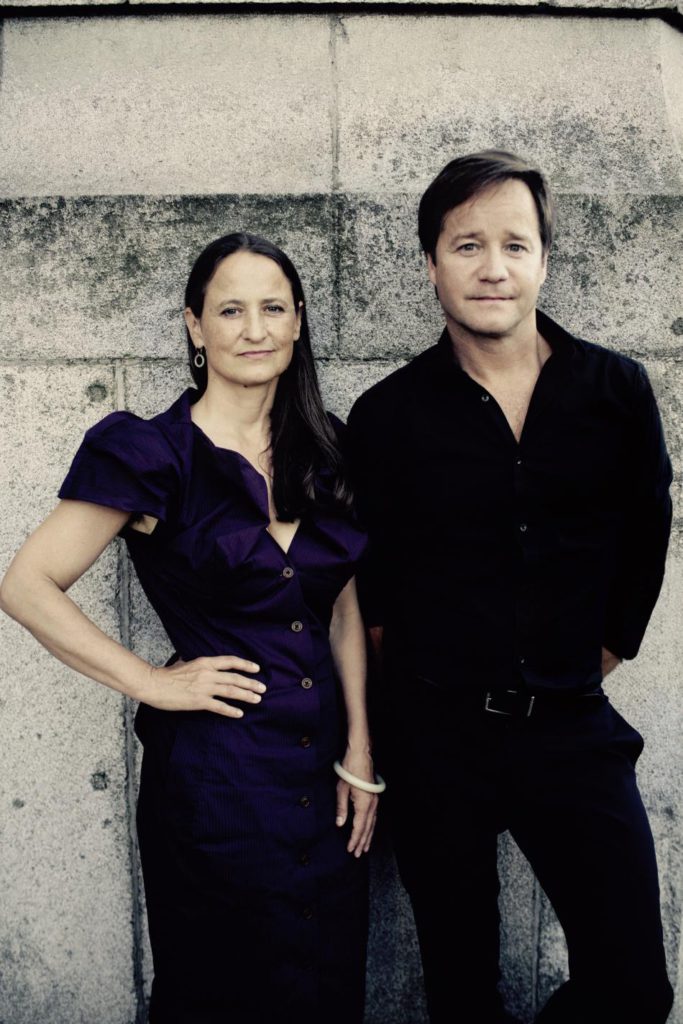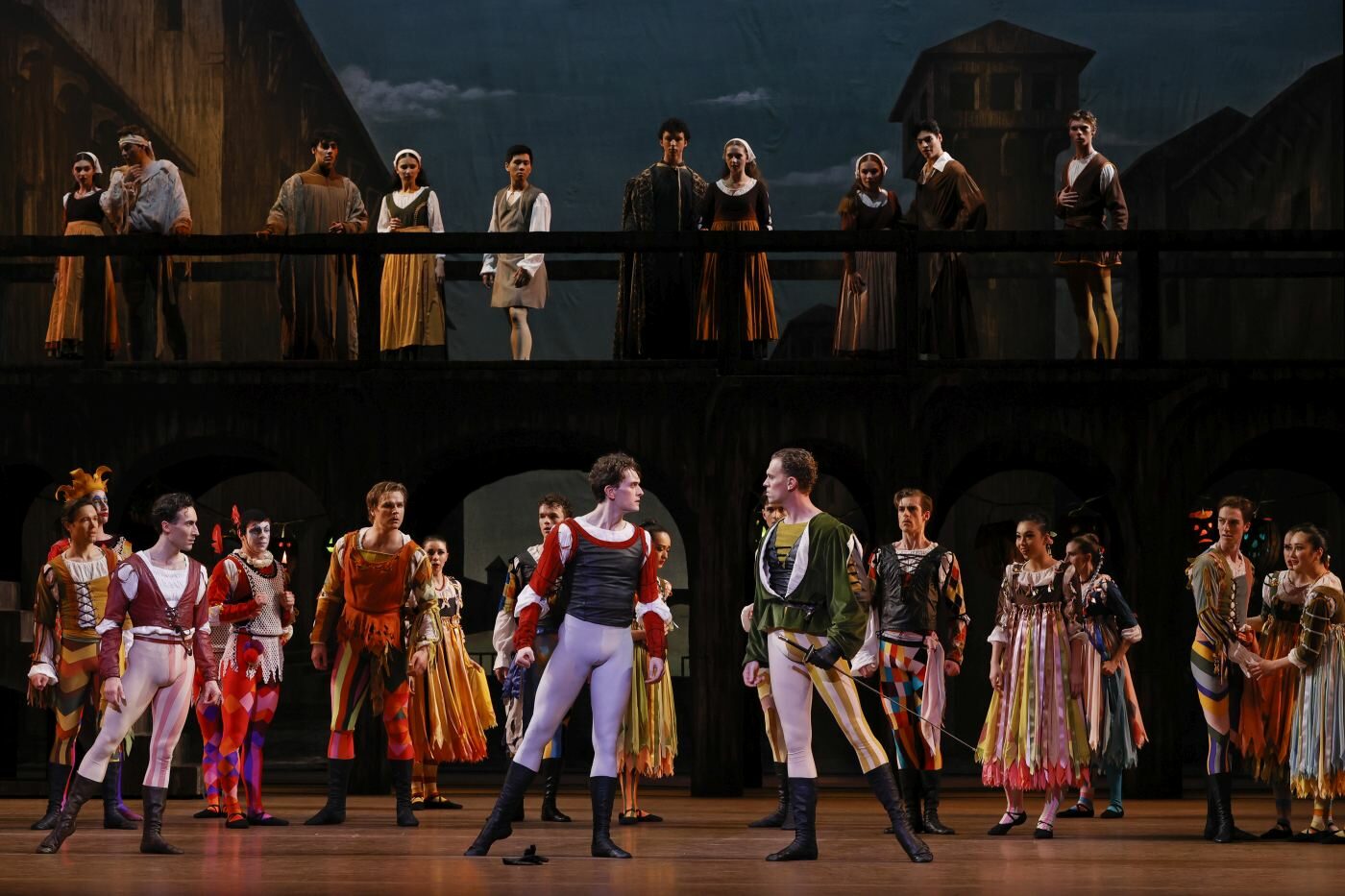State Ballet Berlin
Berlin, Germany
May 04, 2017
by Ilona Landgraf
Copyright © 2017 by Ilona Landgraf
 Around six months ago, questions were raised about the legitimacy of Sasha Waltz and Johannes Öhman’s contracts as future artistic directors of the State Ballet Berlin. Their appointments needed the approval of the Stiftungsrat of the Opera, but because of the upcoming elections, the board hadn’t (and still hasn’t) the required quorum of members for making valid decisions. Having firmly protested against the appointment of the new directors for months, the dancers intensified their opposition at that time.
Around six months ago, questions were raised about the legitimacy of Sasha Waltz and Johannes Öhman’s contracts as future artistic directors of the State Ballet Berlin. Their appointments needed the approval of the Stiftungsrat of the Opera, but because of the upcoming elections, the board hadn’t (and still hasn’t) the required quorum of members for making valid decisions. Having firmly protested against the appointment of the new directors for months, the dancers intensified their opposition at that time.
Apparently hoping that the furor would die down in the meantime, Waltz and Öhman, together with Berlin’s new cultural senator Dr. Klaus Lederer (DIE LINKE), talked with the dancers as part of a staff meeting at the end of April. Their aim was to provide insight into their artistic program, and to start “an open and constructive dialogue”*. On the following mid-morning, Waltz and Öhman gave a press conference in which they tried to imply that the waves had calmed and that all were eager to establish a “trustful and creative atmosphere”*.
The facts are as follows:
A few weeks ago, the news broke that Öhman would take over the company in the 2018/19 season since Nacho Duato had decided to leave his post one year earlier than scheduled in summer 2018. Duato expressed his disappointment about the behavior of Berlin’s cultural politicians in an interview with the Berliner Morgenpost: “I found it to be very dishonest that the politicians would communicate their decision for Sasha Waltz and Johannes Öhman that early. One year in advance is common, two years is imaginable, but three years in advance is indecent.”*
Öhman will hold the reigns alone in the first year; Waltz will join him in the 2019/20 season. According to the statement from the State Ballet’s press office, both had been asked by the senate administration of Berlin to break new ground with the company. Waltz and Öhman’s “vision for the future is to foster classical heritage and to work on new creations with today’s best choreographers, classical as well as contemporary.”*
Can that be called a vision – or is it a matter-of-course?
As before, the company will perform on three stages: State Opera, Deutsche Oper and Komische Oper. The size of the company (currently eighty-two dancers) and its hierarchical structure will be kept. Classical and contemporary pieces will hold an equal share in the repertoire. From her first season onwards, Waltz will create new pieces for the company. Her already existing pieces won’t enter the repertoire – at least according to what Lederer told the dancers. In the press conference, Waltz commented on this vaguely, using phrases like “not for the moment” and “maybe”. Waltz’s own troupe, “Sasha Waltz & Guests” will remain, but whether they will be directed by Waltz or by her husband has been inconsistently reported in the media.
At the press conference, Waltz stated that she and Öhman wanted to bridge the “gulf between classical and contemporary dance.”* But has there been such a gulf in the State Ballet Berlin’s repertoire? This season traces an arc from “Swan Lake” to Hofesh Shechter. In a comment aimed at rbb24, Waltz even went one step further, explaining the dancers’ protests with the company as such: “It is not about me. It is about a much deeper conflict between classical ballet and contemporary dance. It’s just that I represent contemporary dance. So my personhood sparked off the debates.”*
Öhman said that he wanted to turn the company into a vanguard of modernism. Currently, important contemporary pieces would be performed at big houses with only a fifteen year delay. This should be changed at the State Ballet in the future.
Der Tagesspiegel gave an overview of Waltz and Öhman’s plans for the 2018/19 season. Five new pieces are scheduled; two of them world premieres. Those world premieres are by Richard Siegal and – truly good news – by Alexei Ratmansky, who will choreograph a new “La Bayadère”. Further additions to the repertoire will be: “Half Life” by Sharon Eyal, “Your Passion is Pure Joy to Me” by Stijn Celis, and “La Sylphide” by Frank Andersen. Negotiations with Marcia Haydée (reportedly about her “Giselle”) and Mats Ek about their pieces have begun, although they are still in process. Works by Cranko and Forsythe will remain. This is a program “neither innovative nor game-changing,”* Manuel Brug wrote in Die Welt.
A dancer of the company (name withheld upon request) told me in a phone conversation around one week after the press conference that resignation would spread among the dancers. They’ve been fighting hard, but have to a certain degree been successful. Communication with the directors-to-be has improved and – resolving what had been a key demand of the troupe – classical pieces will fill a large part of the repertoire. Yet the dancers are disappointed by the Berlin politicians, and especially by the new cultural senator Lederer, because “he was on our side and promised to do everything to fix the situation for the State Ballet before his appointment in December. Now, as he got elected, he all of a sudden stated to support Waltz and Öhman in every respect, and towards us declared he would be sure that the co-directorship will catapult the State Ballet to undreamt-of heights.”
Waltz and Öhman’s repeated remarks about bridging the gulf between classical and contemporary dance – a gulf they apparently discerned within the State Ballet – annoys the dancers: “What have we done the whole time? Modern pieces aren’t new for us! Both make it look as if we were an antiquated company only dealing with classical dance like 200 years ago. How can they tell this to the journalists? If they really think we dance only classical pieces, then they don’t know us at all.”
Regarding the plans for the repertoire, the dancer told me: “We asked what they consider as classical pieces and Mr. Öhman said, for him the classics end with Cranko’s Onegin. He rated Ratmansky as a neoclassical choreographer, but we don’t know whether neoclassical pieces will be counted to the classical or the modern share.” The actual numbers of shows will differ from the 50/50 arrangement: “Even if the number of productions will be 50/50, the number of shows will be 70% classical pieces, 30% modern ones.”
The classics aren’t Waltz metier: “She assured us, she won’t touch the classics, won’t be there in the studio for rehearsals and won’t intervene in the hiring of classical dancers.” Öhman’s remarks about the classical repertoire seemed well-founded to the dancers.
The company is very happy about Ratmansky’s return. “When he mounted Namouna, he was here for more than one month working with us. It was like a transformation. Getting a creation from him is amazing!” Yet the choice of new classical pieces surprises the dancers: “We have a few classical pieces in our repertoire, La Bayadère, Giselle, Swan Lake and Nutcracker. Why throw those out and substitute them with the same? Why don’t we get Raymonda, Coppélia, Le Corsaire, Manon or La Fille mal gardée, for example? Nacho [Duato] faced much critic this season for spending money on mounting his own Nutcracker although we had just staged a new one in 2013 [Vasily Medvedev and Yuri Burlaka’s version]. Now the same will happen again. Those classics we have are selling very well, they don’t need to be replaced. Instead we should enlarge our repertoire with other pieces.”
The dancers also published a written statement after the press conference, ending with: “The question is who of us will stay…”*
* translations from the German by the author
| Link: | Website of the State Ballet Berlin | |
| Photo: | 1. | Sasha Waltz and Johannes Öhman © André Rival |
| Editing: | Jake Stepansky |




Klaus Lederer is the perfect servant for his master. Nothing can be expected of him. No rethinking, no action, absolutely nothing.
There is a huge gap between the promises before the election and the implementation of these after that. There someone should build a bridge!